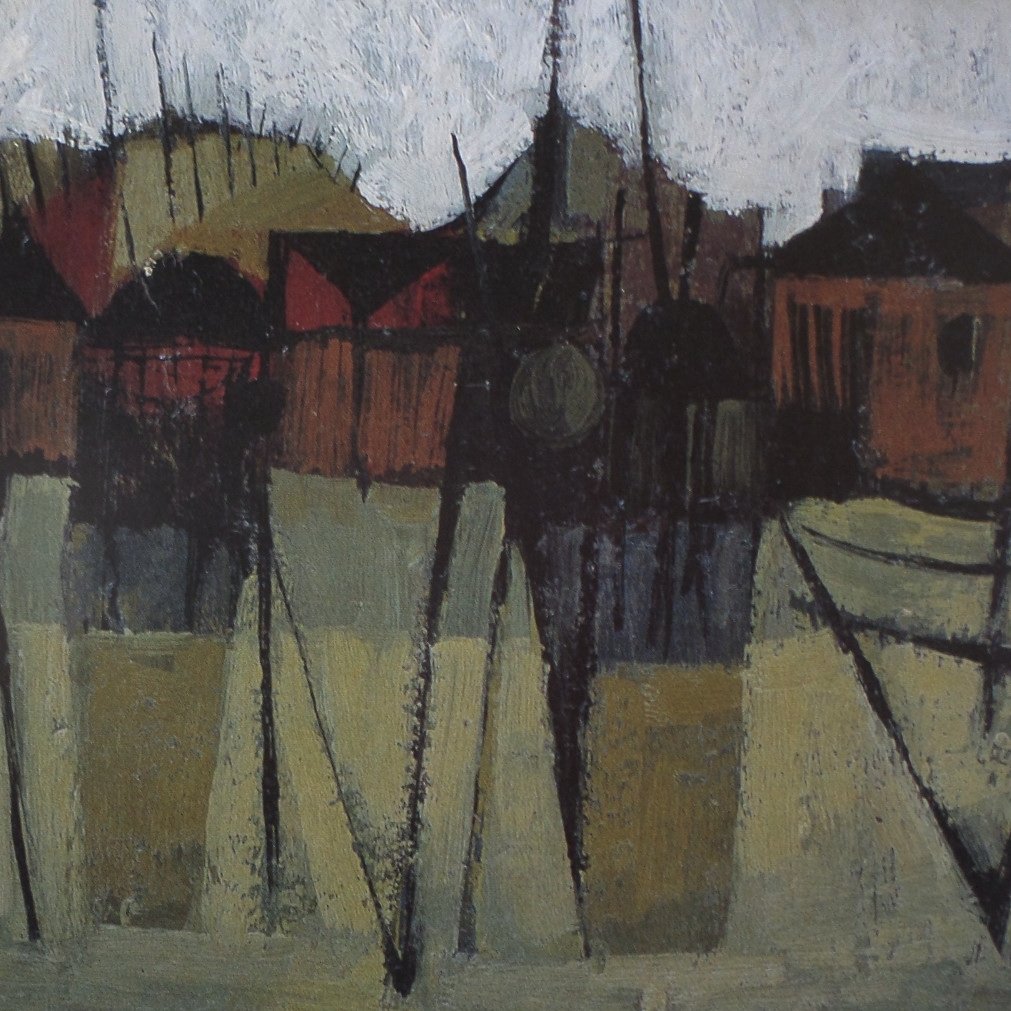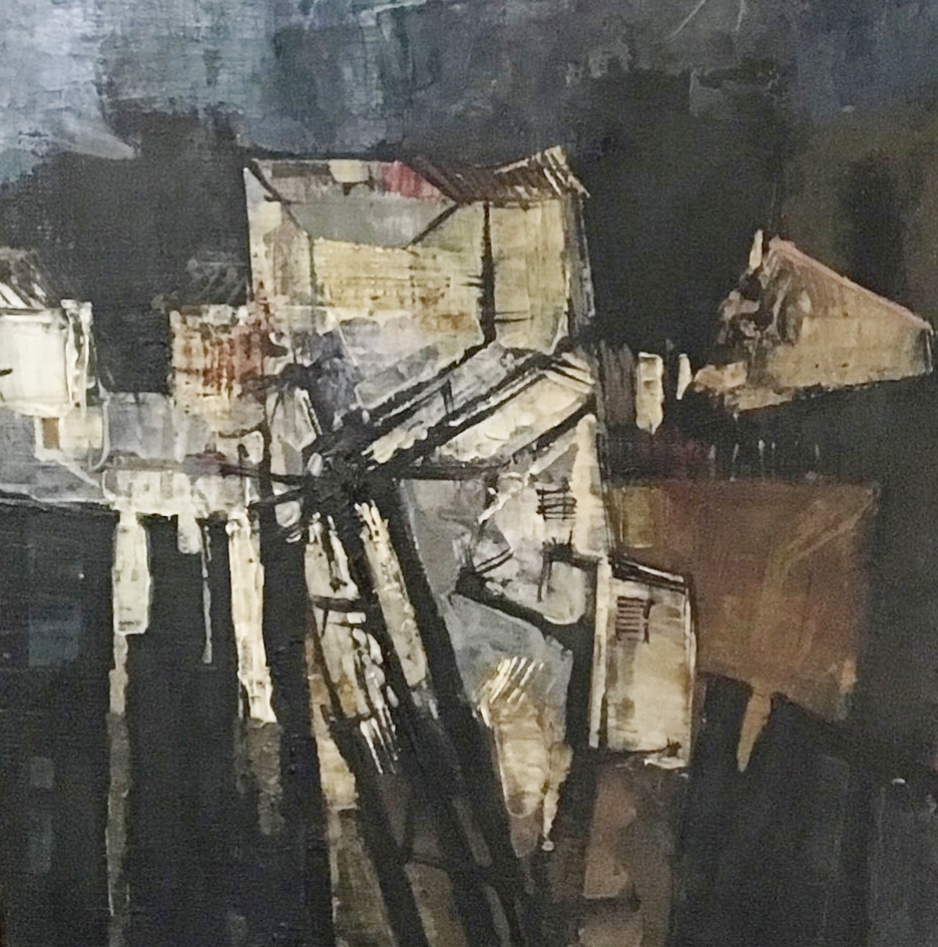Alan Reynolds is one of our greatest artists who was born in Newmarket, Suffolk in 1926 and about whom there is a great deal of material written. So what has Louis James got to do with Alan Reynolds , I hear you ask? I suspect that many who read this short blog will have never heard of Louis James , so let me fill in a few gaps.
Louis James was born in Adelaide , Australia in 1920 and became a draftsman with the national department for Lands and Survey until war broke out and he was called up. His regiment went to the UK and he then became one of the famed "desert rats" fighting in Tobruk , Patestine and Syria. He caught Malaria and was sent home to Australia where he continued his career as an artist having an exhibition at the John Martin gallery in 1949 before deciding, with his wife to travel to London to further his career. Similarly Reynolds was called up for war service and unsurprisingly, like so many involved the experience, it had a profound impact on both James and Reynolds.
Post war Reynolds studied at the Woolwich Polytechnic School of Art between 1948 - 52 and it was at this point in time that the lives of Louis James and Alan Reynolds appear have collided. It seems unrecorded as to exactly how they came to meet but one assumes that they moved in similar circles as two men studying art and attempting to make a way in life. The common denominator is the fact that they both exhibited in the London Group show in 1951 and were members of the AIA Artists' International association, a political group and mixed group exhibiting society promoting peace and democracy and were anti fascist. These group shows offered the best chance for both Reynolds and James for a foot in the door and so it was that Reynolds in particular was seen as a new bright young thing.
So they clearly found a common bond and passion for landscape drawing as they became good friends and accompanied each other on painting trips to the Kent countryside. At this time James's wife was a nurse and her regular income allowed her husband to take many jobs including a framer and gilder with Robert Savage , whose shop in South Kensington was a haven for visiting artists.
During 1950 Louis James lived in Chelsea, Kensington, Notting Hill gate and the following year moved to Hampstead which was an area he liked with many painters and creatives choosing to reside there. So, at a time that his life was beginning to settle into the London Art scene Reynolds life was about to be blown apart. In June 1950 war broke out n Korea and in 1952 Alan Reynolds received a letter calling him up for Army training. The memory of front line action was still fresh in his memory and he turned to his close friend and someone who understood the emotions , Louis James. It was James and his wife who helped him write a letter sayings how he was not prepared to go back to war. He appeared before a tribunal at Fulham town hall and expected to be sent to prison. Instead his objection was accepted and he went on to be given a scholarship at the RCA and started there in 1952.
It is supposition on my part here but at the age of 26 years a single man living in London with the fear of combat in front of him he must have been in a very fragile state of mind and sought comfort and advice from his very closest and trusted friends. Louis James and his wife must have been very close to Alan Reynolds at this point in time and their artistic output supports this view. The work completed by Reynolds during the early 50's is remarkably similar and suggests that they were almost sat next to each other painting the same rural scenes in the same artistic styles.
It was 1952 that Reynolds had his first one man show with Redfern gallery and one each of the following years until 1956 . It was 1956 that Louis James had his first one man show with the same gallery and was presumably referenced by Reynolds, followed with another the following year. It is hardly surprising when you look at the work of both artists and the similarity. Clearly both influenced by the work of Paul Klee their oils from 1952 both have a horizontal divide where roofs rise above a central horizontal line and then cast shadow reflected downwards and back into the foreground. (see images below)
In fact both artists work follows a similar path developing from the landscape in to a more abstract form. When Reynolds began to work with the Edinburgh weavers in the late 1950's we see James work follow in style and abstraction.
During the time that Louis James had his association with the Redfern he got to know many artists such as Francis Bacon , Ceri Richards, Patrick Heron and Sidney Nolan to name but a few, and he became familiar with the work of the Cobra group and de Stael and the influence is seen in his output from the early 1960's when he exhibited with the Stone Gallery in Newcastle. My personal preference is for his work from the 1950's where he painted Farmyards, his back garden and Kent landscapes all of which have a very English feel and are of a quality and style that is among the greats. James also toured the UK with his wife camping as they went and much of his work reflects the post war countryside.
The other body of work produced by James during the same period is from his holidays in France. He would go to the Dordogne Valley near Lascaux to see the cave paintings, these fascinated him and he found an abstract quality in the over drawings and over scrapings by following generations of painters. While staying in the nearby villages he would often paint and these images of the villages bare a similarity to the early work he completed from 1952 with Reynolds in the English countryside. In 1964 James returned to Australia and this coincided with a change in style of his work. The rich impasto of his London paintings inspired in part by his interest in French art and the Dordogne cave paintings gave way to more evenly painted surfaces and the subject matter changed to the more figurative imagery of urban Australian life.
His move to Australia also removed him from the psychi of the British art press, galleries and buyers and he has become somewhat lost and very much underrated. There is no doubt that his early work from the Redfern period is of a very high quality and very much of its time . Louis James should, in my opinion be placed firmly back on the Modern British Art map and where he belongs as a fine artist.


